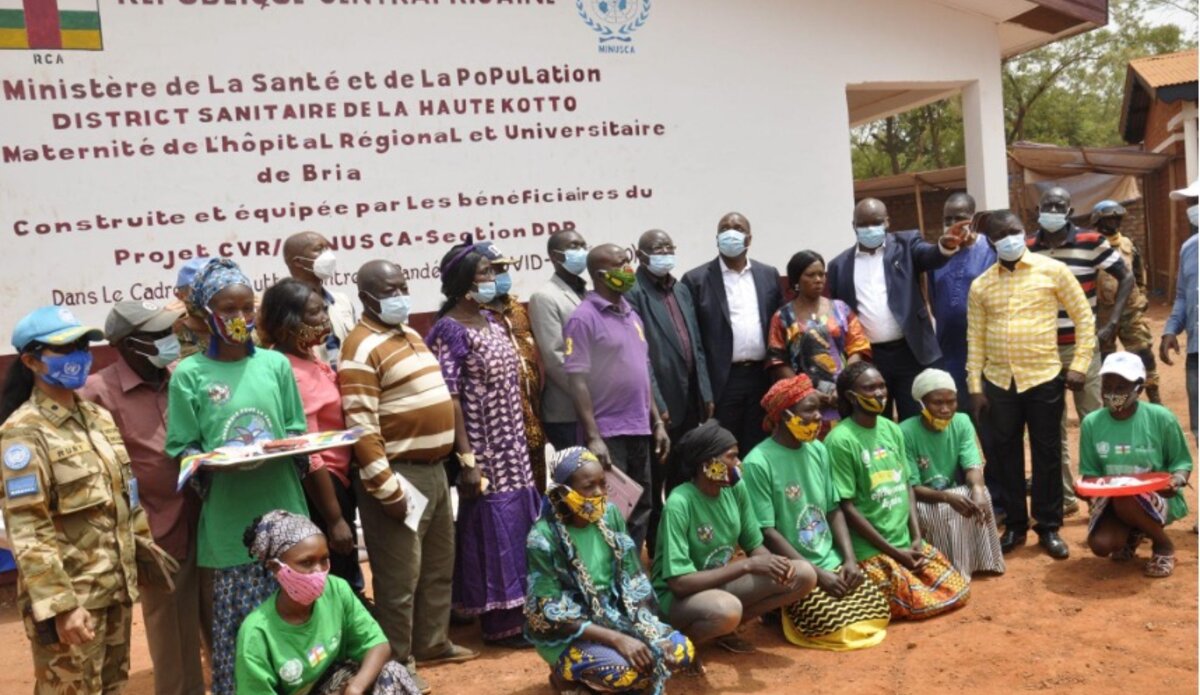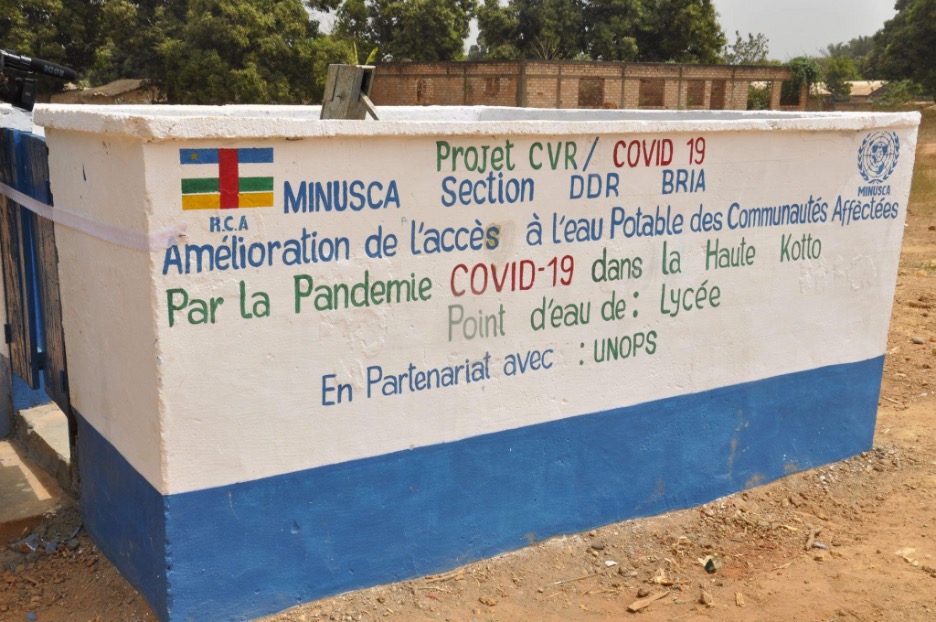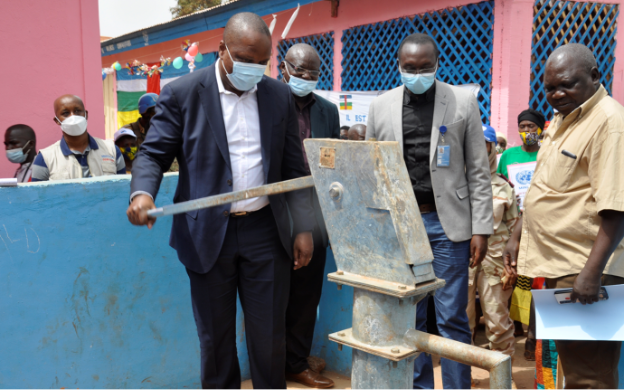In this story series, UN Peacekeeping shows the impact of Action for Peacekeeping, which guides peace operations across 12 active missions.
Written by Crystal Lee
Bria, the capital of the Haute-Kotto prefecture in the Central African Republic (CAR) has been torn apart by opposing armed groups since the conflict erupted in the country in 2013. But on the shores of the Samba river, a unique community project has brought together community members who were until recently on opposing sides of the conflict. The aptly-named Tena de Tena project – which means “hand in hand” in Sango, the country’s primary language – provides alternative livelihood opportunities to 52 people right now, including 23 women, who farm the land, manage fish ponds, produce bricks from the red earth and raise cattle for sale.
Since 2016, the Tena de Tena project implemented as part of the Community Violence Reduction (CVR) programme of the Multidimensional Integrated Stabilization Mission in the Central African Republic (MINUSCA), has supported 4,000 – 6,000 people each year. The project is driving economic development in rural CAR and growing into a powerful force for long-lasting peace.
Community Violence Reduction by UN Peacekeeping: a grassroot proposition
Community Violence Reduction (CVR) is a strategy that was first utilized in Haiti in 2006, when the UN Security Council urged that the country's efforts to disarm, demobilize and reintegrate ex-combatants (known as DDR) be shifted towards grassroots initiatives that help neutralize the influence of armed gangs operating in urban neighbourhoods. Since then, the community-focused approach, also known as “Second Generation DDR” has expanded to six other peacekeeping missions, including in the Central African Republic in 2015, when it was first used to prevent armed groups from disrupting the electoral process.
“DDR plays a decisive role to help stabilize a country starting to emerge from an armed conflict, with large swaths of its territories remaining under the control of the armed groups,” explains Lizbeth Cullity, Deputy Special Representative of the UN Secretary-General in the Central African Republic. It is “a tool that ultimately aims to stand down the armed groups and progressively lead towards the restoration of the State authority,” she adds.
On the path to tolerance, dignity and peace
Community Violence Reduction programmes in the Central African Republic and elsewhere have helped prevent further recruitment into armed groups and quell community tensions through income-generating opportunities and community dialogue forums.Amir Sinousi, a father of three, drove a taxi in Bangui before the eruption of violence in 2013. “I joined a group of combatants when I lost my only source of income because of the crisis,” he recalls. When the opportunity arose, he joined the first CVR programme to learn new skills as a car mechanic. “Today, I have my own repair shop and earn between 30,000 and 40,000 XAF (USD $50-65) per week,” he beams, proudly adding that he now trains two youth from his neighbourhood and is “called to help whenever a car breaks down in several towns around.”
A second chance for everyone
In Lasmi, near the city of Bria, 20 women ex-combatants are learning new skills such as stitch-bonding, baking, and catering in a kitchen under the local CVR programme. The programme also provides a venue for mediation, dialogue and local dispute resolution. A borehole with a water pump was installed to serve not just the trainees on the site, but also the nearby 5,000 homes.
With the support of MINUSCA and local civil society organizations, similar programmes are spreading across the Central African Republic, bringing their small but significant contribution to the restoration of peace throughout the country.
| The majority of peacekeepers today serve in missions with mandates that prioritize the protection of civilians, which includes preventing conflict and sexual violence, protecting women and children, and promoting human rights. It is a key area of the Action for the Peacekeeping agenda and its implementation strategy A4P+, which includes Cooperation with our host countries as a priority and Women, Peace and Security as a cross-cutting theme. |



